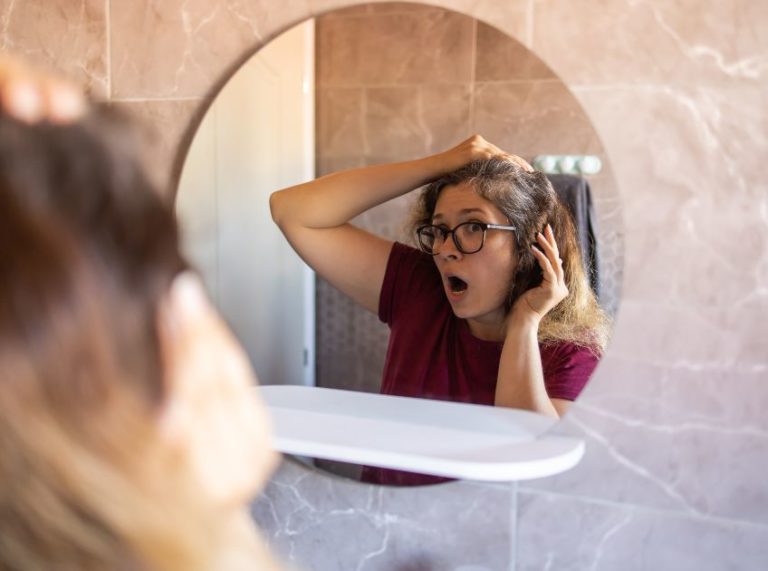
Important: This article is for informational purposes only. Please read our full disclaimer for more details.
Grooming yourself is an essential component of self-care and love. However, hair on body parts plays a vital role in keeping us secure. Nose hair, also known as nasal hair, serves to capture dust from the air as we breathe. Even though nose hair performs several essential functions, they don’t look good when protruding out of the nose.
In this situation, it is possible to remove hair from noses by waxing. This article will provide a detailed insight into nose hair waxing.
What Is Nose Hair Waxing?
Nose hair waxing is the process of nose hair removal using wax. Usually, hard wax is used for the purpose.
In the process, warm wax is applied to the inner part of the nostrils using a thin applicator stick, just as it would be on any other body part.
The wax adheres to the hairs in the nose and, once hardened, is quickly removed to get rid of the undesirable hairs. Typically, professionals in salons or beauty clinics use this procedure.
How Often Can You Do Nose Hair Waxing?
3-4 weeks between subsequent nose hair waxing sessions is essential to let the hair grow to a manageable length. It allows the wax to grip the hair effectively and remove them from the nostrils.
Does Nose Hair Waxing Hurt?
Nose hair removal using warm wax can be painful. Pain level varies between individuals based on their pain tolerance.
Since in the process warm wax is applied into nostrils with a specially designed applicator and quickly pulled out from the roots in one swift motion, it causes a sudden pain.
Can I Avoid Nose Hair Waxing?

Yes, definitely you can avoid nose hair waxing, especially when the nose hairs are not protruding out from the nostrils or becoming noticeable.
The first step is to identify and address the underlying issues that caused someone to seek it in the first place. Here are some tips on how to avoid waxing your nose hair.
1. Regular Maintenance
Waxing is less necessary if nose hair is kept at a manageable length. Frequent grooming can prevent nose hair from growing out of control or becoming too visible.
2. Appropriate Grooming Practices
Appropriate habits can assist in preserving overall appearance and hygiene. This includes taking regular showers, washing one’s face, and attention to grooming needs.
3. Healthy Lifestyle
Maintaining good health helps improve hair development and upkeep. A healthy lifestyle should consist of frequent exercise and a well-balanced diet.
4. Seeking Advice From a Professional
If you are concerned about extra nasal hair, speaking with a doctor might help discover any underlying medical concerns that may exacerbate the situation. They can offer advice on appropriate lines of action.
5. Self-acceptance and Confidence
Realizing that nose hair is a common bodily component, everyone has it to some degree. Accepting one’s natural characteristics might alleviate the stress of meeting society’s beauty standards.
Side Effects of Nose Hair Waxing
Waxing nose hair, like any other hair removal technique, can have unintended repercussions, especially if the user has sensitive skin and the procedure is not performed correctly.
The harmful consequences of waxing nose hair are:
1. Pain & Discomfort
Pulling hair from the root is an essential aspect of waxing, but it can be unpleasant, especially on delicate areas like the inside of the nose. Although everyone reacts differently, some may find it highly unpleasant.
2. Irritation and Redness
Waxing may cause discomfort and redness in the delicate skin inside the nostrils, especially if the wax is boiling or the skin is sensitive. This irritation may remain for a short time following the waxing procedure.
3. Ingrown Hairs
Waxing may sometimes result in ingrown hairs that curl back into the skin instead of growing out. Redness, edema, and infection may occur if germs penetrate the follicle.
4. Nosebleeds
Inappropriate or forceful waxing procedures can cause nosebleeds, especially if they irritate or harm the fragile blood vessels of the nose.
5. Infection
A bacterial or fungal infection may result from inadequately cleaned wax or waxing equipment. To reduce this risk, ensure the instruments used to wax nose hair are hygienic and clean.
6. Allergic Reactions
Certain persons may be allergic to wax components or other compounds used in waxing.
This can result in allergy symptoms such as hives, swelling, or itching.
7. Temporary Hair Removal
Waxing the hair on the nose can last longer than trimming or plucking, but the hair will eventually return. Each has hairless nostrils for a distinct period.
Alternatives of Nose Hair Waxing
- Trimming nose hair using scissor or trimmer
- Laser hair removal
- Electric hair removal
- Depilatory cream
Conclusion
To reduce the risk of side effects, nose hair waxing should be performed by a competent specialist who uses quality, hypoallergenic products and follows proper hygiene standards. To limit the chance of problems, consumers should follow the expert’s pre- and post-waxing care guidance.
Image Source : canva
Related Articles
- How to Wax Your Legs at Home
- Epilator Vs. Waxing: Which Is Safer And Better For You?
- How to Remove Facial Hair with Egg White?















